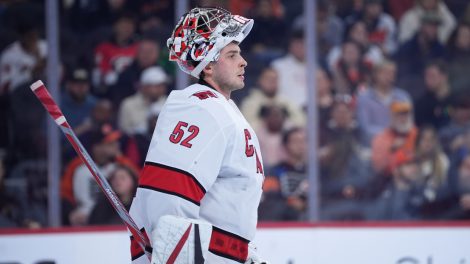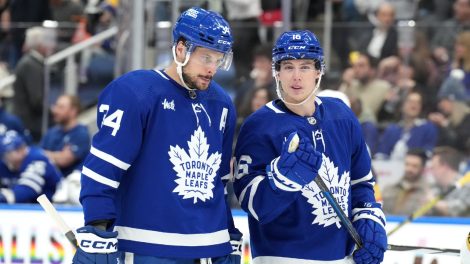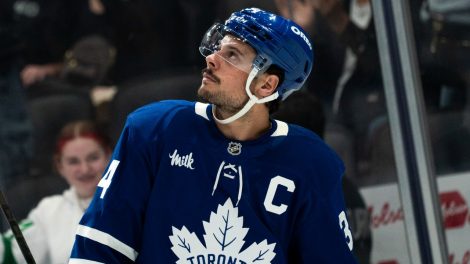NASHVILLE — Think about the outstanding defensive defencemen in NHL history. The stay-at-home guys, the rearguards who might not get you a goal you needed but made sure the other guys weren’t getting one either.
Usually big, sturdy fellows. The modern prototype in many ways was Rod Langway, heisted out of Montreal by Washington rookie general manager David Poile after just 10 days on the job in 1982. It’s a long story, but let’s just say when Poile called owner Abe Pollin from the Royal York Hotel in Toronto to tell him he had traded Capitals favourite Ryan Walter to get Langway, Pollin was none too pleased.
"You better know what you’re doing," he muttered before hanging up.
Langway, tough and durable, became so much the model of what a defensive defenceman should be that for years hockey people said they should name a trophy after him since the Norris usually went to a blue-liner with good offensive numbers. You know, something like the Selke, but for D-men.
[snippet id=4234155]
After Langway came players like Kevin Lowe, Kjell Samuelsson, Ken Daneyko, Adam Foote, Zdeno Chara, Derian Hatcher and Hal Gill, then in more recent times, players like Brooks Orpik and Dan Girardi, among others. Big strapping defenders who could handle a big forward in front of the net, defencemen who understood the value of a good crosscheck.
Occasionally, there were smaller defencemen under six feet in height, but they were usually speedy, all-offence players. Little blue-liner Marc-Andre Bergeron, for example, played for a number of teams over the course of a decade because he could add offence from the back end.
Then along came Josh Morrissey, not the smallest NHL defenceman ever, but in the conversation.
Morrissey was preceded by other smaller defencemen of his generation like Torey Krug and Jared Spurgeon, but the Winnipeg Jets rearguard is unusual in that he just signed a two-year, $6.3-million contract this fall primarily for being the Jets premier shut-down defenceman.
That’s how much the game has changed. The defenceman can now be the size the goalies used to be, while the goalies are the size defencemen used to be.
The 23-year-old Morrissey might be six-feet tall, maybe, and perhaps 180 pounds. But he’s playing the same role that Langway, etc. played in their day, except using a different skill set to do it. He’s an excellent skater, which allows him to close down forwards quickly and get to the puck first. He’s got a good stick for intercepting passes and knocking down pucks, and knows how to quickly exit the defensive zone.
The days of the big, plodding blue-liner are over in the NHL. Now it’s about speed, quickness and skill on the back end, not just to create offence, but to defend.
Morrissey says the changes in the rules over the years, particularly those that no longer allowed forwards to hold up forecheckers, have altered the job requirements for NHL defencemen.
"Suddenly, you had to be able to skate to defend. If you couldn’t skate, you were getting blown away by all these fast forwards," he says. "It’s all around the league. There are still big defencemen who can move. Look at Victor Hedman. I don’t know how big he is but he can fly. But the overall thing is if you can skate and move and think the game, then you can play. Size doesn’t matter."
[relatedlinks]
In last June’s NHL draft, 14 of the 31 first-round picks were defencemen, and the majority were six-feet tall or less. The seventh pick, Quinn Hughes, is only five-foot-nine. If you use the draft as a barometer of change in the NHL, it was the clearest indication yet teams are adjusting to the increasing speed of the game by trying to acquire defencemen once too small to get a second look.
"There were defencemen going in the draft who wouldn’t even have been on our draft list 15 or 20 years ago because of their size," says Poile.
It seems likely we’re going to see a lot more of the smaller defenceman in the future. Poile, as usual, was a little ahead of the curve on this one. In Ryan Ellis, he has one such player on his Nashville Predators. Ellis is in his sixth year as a Preds regular. He has offensive skill, but he, like Morrissey, excels defensively because of his ability to read and react quickly, not because he can clear the front of the net.
Morrissey, meanwhile, came out of the Prince Albert juniors as a smooth-skating defenceman with big offensive totals. He played that role for Team Canada at the world juniors. But two years after he was drafted he was sent to the minors while others in his draft year like Seth Jones, Darnell Nurse, Rasmus Ristolainen and Nikita Zadorov were already in the NHL. All were bigger than Morrissey, and their NHL teams seemed comfortable that they could handle the defensive workload.
Morrissey decided he needed to rethink how he played the game if he was going to get to the NHL, and began to change his approach with the Manitoba Moose under head coach Keith McCambridge.
"Keith was hard on me defensively. He didn’t let me off the hook at all. It made me a lot better," he says.
When he got back to Winnipeg for training camp in the fall of 2016, the difference was noticeable right away.
"I was at the World Cup of Hockey, and I kept getting reports saying you gotta see Morrissey," said Winnipeg head coach Paul Maurice. "I said, ‘Yeah, yeah.’ Then I got back. I’ve never seen a player transform his game so much over the course of one off-season."
[snippet id=3816507]
These days, it’s Morrissey and Jacob Trouba who get the most minutes on a strong Jets defence against the best forwards of the opposing squads. Dustin Byfuglien usually gets the most minutes because of all the time he gets on the power play, but after Big Buff, it’s Morrissey and Trouba.
In Thursday’s 3-0 road loss to the Predators, Morrissey played 26 minutes and 26 seconds, more than any player on either team. Of that, 10:37 was spent killing penalties, evidence of Maurice’s belief that Morrissey is his best defender. Most of Winnipeg’s best players were minuses against the Preds, but Morrissey was even.
"To get to the next level wasn’t about my offensive talent but learning how to do all the things defensively, winning battles and not being weak defensively," says Morrissey. "When I was in the minors, that’s what I focussed on, being solid in my own end first. If you want to play the big minutes, they’ve got to be able to trust you."
He’s about four inches shorter than Langway was, and 25 pounds or more lighter. They couldn’t be more different as players, and neither would probably have been as effective playing defence in the other player’s era.
Morrissey has a ways to go to be thought of anything like Langway was in his day. But he’s on the cutting edge of change in the NHL. The prototype for the next generation of rearguards, small and fast? We’ll see.








